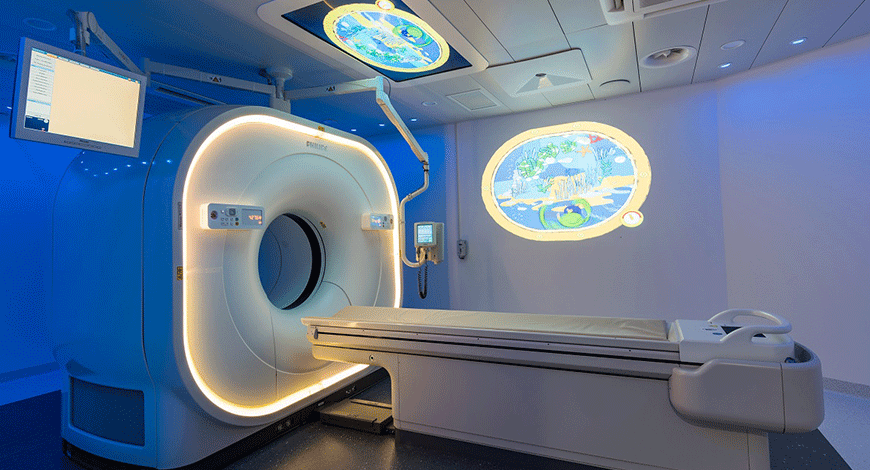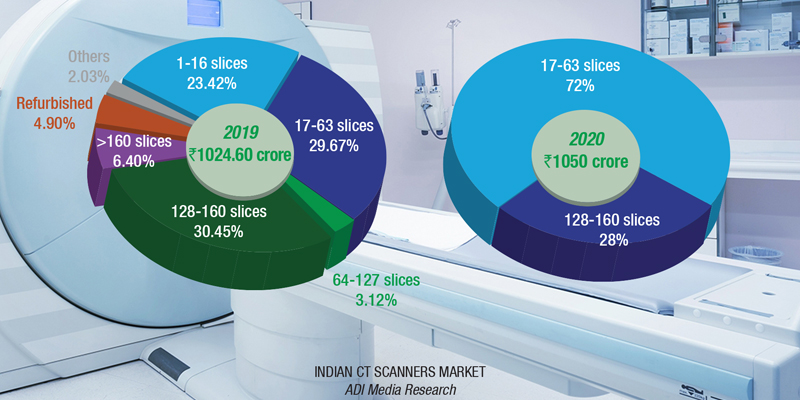CT Scanners
CT – Fifty-one years and counting

With the development of CT from its introduction, it has dramatically changed in many clinical and technical aspects, such as multi-detector computed tomography, iterative reconstructions, dual-energy, and cone-beam computed tomography (CBCT). However, a development in CT seems to be an excellent barometer of CT’s success in many clinical applications.
Few predicted the tremendous growth of X-ray computed tomography (CT) technology, and even fewer foresaw the rapid development of clinical applications of CT back in the late 1980s. As a matter of fact, there was so much enthusiasm around the newly introduced magnetic resonance (MR) imaging that predictions of MR taking over CT imaging were accepted by most. More than 30 years later, CT has not only survived the challenges from other imaging modalities but has also moved to the frontline of hospital’s diagnostic imaging.
There are many factors that contributed to the success of CT, and there are multiple ways to summarize the technological advancements over the past 30 years. These advances can be examined based on their clinical impact, performance improvements, or the underline technologies themselves.
From a clinical impact point of view, coronary CT angiography (CCTA) is no doubt one of the major driving forces for many technological developments. It demands fast data acquisition to freeze the heart’s motion, superior spatial resolving power to characterize small pathologies, and sufficient coverage to enable imaging of the entire heart over one or a few cardiac cycles. Nearly all technological advancements over the years have contributed in one way or another to the success of CCTA today. Of course, stringent requirements for other clinical applications, such as trauma, oncology, and stroke, also played key roles in the technology development.
From a performance point of view, technology advancements can be classified chronologically into three major categories – isotropic volume coverage, superior temporal resolution, and spectral information for material classification and differentiation. The initial CT development was focusing mainly on producing good images for a static object – achieving organ-in-a-breath-hold coverage with the introduction of helical/spiral data acquisition and later, isotropic spatial resolution of the entire body with the introduction of multi-slice CT.
The next frontier of the development focused mainly on the temporal aspect of scanning – freezing patient motion and obtaining dynamic information of larger scan ranges with faster gantry rotation, wide-cone CT, dual-source CT (DSCT), larger helical pitch, and advanced algorithms. The third frontier of the CT development was to go behind pure anatomical imaging, and provide color to the CT images by leveraging the dual-energy or multi-energy data acquisitions. These data acquisition modes are built upon all the previous advances in the category of isotropic volume coverage and temporal resolution improvement.
CT advances can be categorized into five major developments, from the point of view of underlying technologies – helical/spiral data acquisition, multi-slice CT, wide-cone CT, DSCT, and spectral CT. Although there are some overlaps among different categories, the separation is somewhat clearer as compared to either the clinical impact perspective or the performance perspective.
Needless to say, the future technology is both exciting and diverse. Nowadays, artificial intelligence (AI) and deep learning technologies have become, and will continue to be, a powerful tool and a disruptive technology that pushes the frontier of CT. AI-supported improvement and automation of the CT scan workflow and approaches to enhance the clinical information of CT images have changed the way technicians and radiologists work. Modern CT scanners provide anatomy-aligned reconstructions and advanced visualizations as part of standard image reconstruction tasks, and even automated identification and quantification of pathological processes are on their way to routine integration into the CT workflow.
Additive manufacturing (3D printing) will continue to impact the way radiologists interact with other medical professions and patients, on the information-presentation front. The rapid development of virtual reality and augmented reality has and will continue to impact many radiology departments, ranging from training to operation, and new workflows. Interestingly, despite all technological advances and improvements, all modern CT scanners are still based on the third-generation rotate–rotate geometry. There are new developments on the X-ray tube technologies that may allow multiple X-ray sources to be placed on the same CT gantry and potentially lead to a new generation of CT scanners with less or no mechanical motion. Other approaches, such as phase-contrast CT, have recently gained considerable attention in the scientific literature but have not yet led to clinically useable whole-body CT systems.
The Indian market for CT scanners in 2020 is estimated at ₹1050 crore. The market did not get adversely impacted by COVID-19. After the major dip it saw in April-May-June 2020 quarter, it rapidly picked up in the remaining three quarters of the fiscal. In fact, in 2021, the market size is poised for at least ₹1500 crore. April-May-June 2021 have seen a huge uptick in sales, with 60–70 percent being sold in new sites, where CT services did not exist, mainly in Tier-II cities. Big corporate hospitals are also buying more CT machines, as a CT scan takes 15 minutes but sanitizing the machine after each patient takes 45 minutes.

However, the preference has shifted toward the value model, with the bulk of demand generating for the 17–63 slice machines, estimated to account for as much as 72 percent of the market. The other segment that has seen some traction is the 128–160 slice models. The refurbished segment continues to be in demand and contributes about 8 percent to the market by value.
GE continues to dominate the market. In 2020, apart from Siemens, Toshiba, and Hitachi, two brands that had some visibility were Medirays and United Imaging.
|
Indian CT scanners market – 2020 |
||
|
Leading players* |
||
| Tier I | Tier II |
Others |
| GE | Siemens | Toshiba, Hitachi, Philips, Medirays, and United Imaging |
| *Vendors are placed in different tiers on the basis of their sales contribution to the overall revenues of the Indian CT scanners market. | ||
| ADI Media Research | ||
Globally, around 375 million CT procedures are carried out each year, increasing annually by 3–4 percent. The rapidly evolving needs of clinicians and radiologists, coupled with technology advancements, such as photon-counting detector technology, machine learning, deep learning, and spectral imaging have transformed the landscape of the global CT scanner industry.
With the advent of high-speed and multi-slice CT scanners, healthcare providers have changed their approach to imaging, diagnosis, and treatment of patients as new ways for clinical applications in such areas as trauma, vascular, pediatric, and cardiac imaging are possible due to the higher speeds at which scanning can be done. Rapidly growing demand for bedside imaging, home healthcare, and growing use of CT scan to assess the accuracy of post-interventional medical procedures, medical implants, and anatomical confirmation are some of the main factors driving industry growth.
Indeed, many would argue that CT has been nothing short of a game changer in medicine. Prior to the widespread adoption of the modality, exploratory surgery was common for a wide range of clinical presentations when classic examinations could not find an answer. Thanks to CT scanning, exploratory surgery has been largely eliminated.
Looking ahead, the next 50 years should be just as productive, particularly as AI makes its mark on CT protocoling (and reduced radiation dose), contrast delivery, and serving as a primary or second reader. CT’s role in planning therapy or predicting patient outcomes also will only increase as new AI algorithms are developed. Image post-processing, with 3D printing or new volume-rendering techniques like cinematic rendering as well as augmented reality are certain to drive expansion of CT’s role well into the future.
Indeed, the best is yet to come!











